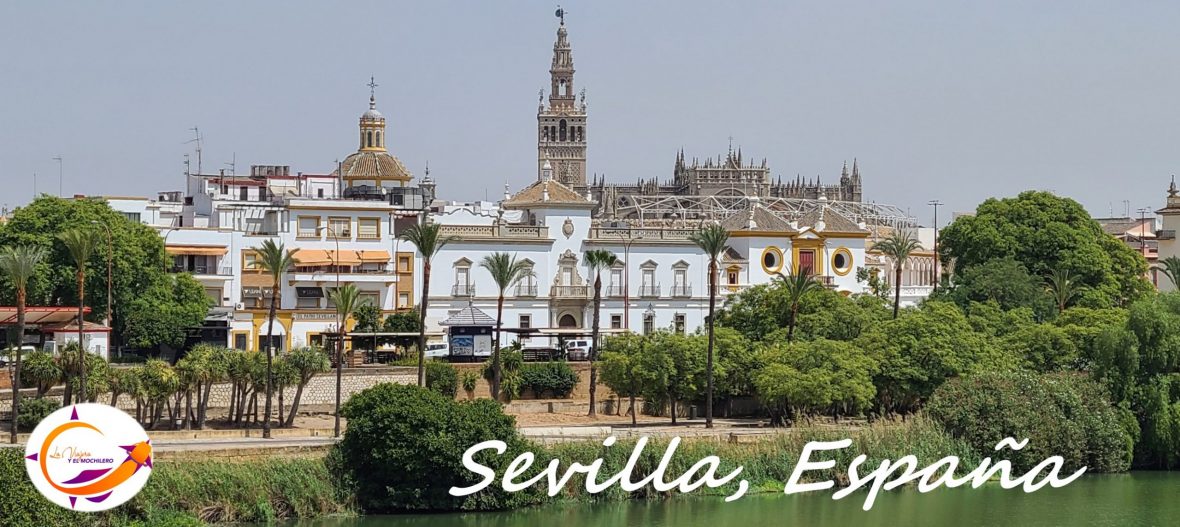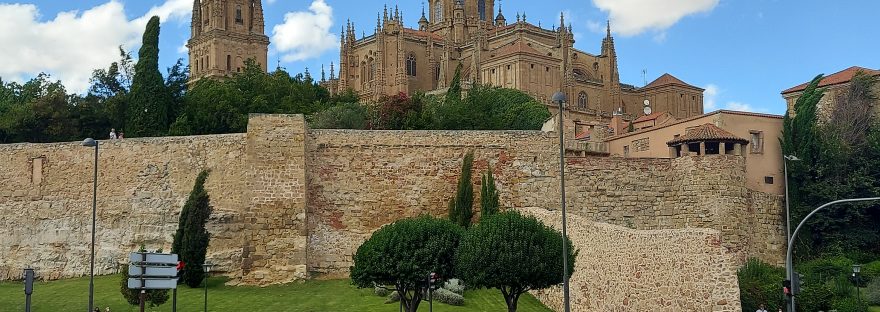In 1491, the Cabildo of Salamanca proposed the need for a temple of larger dimensions, since the Old Cathedral, Romanesque, was small and dark for the time, given the population development that was taking place at that time. The master builders of the cathedrals of Toledo and Seville were hired, with the mission to build a new cathedral for Salamanca, laying the first stone on May 12, 1513. We had commented in the previous article dedicated to the Old Cathedral, that when we observe the structure it gives the impression that it is only one cathedral and not two. This was achieved by supporting the New Cathedral on the north wall of the Old Cathedral. The wall was reinforced towards the interior of the old temple, leaving the lateral nave partially reduced with the new construction. The tower of the new cathedral was built over the bell tower of the Old Cathedral.
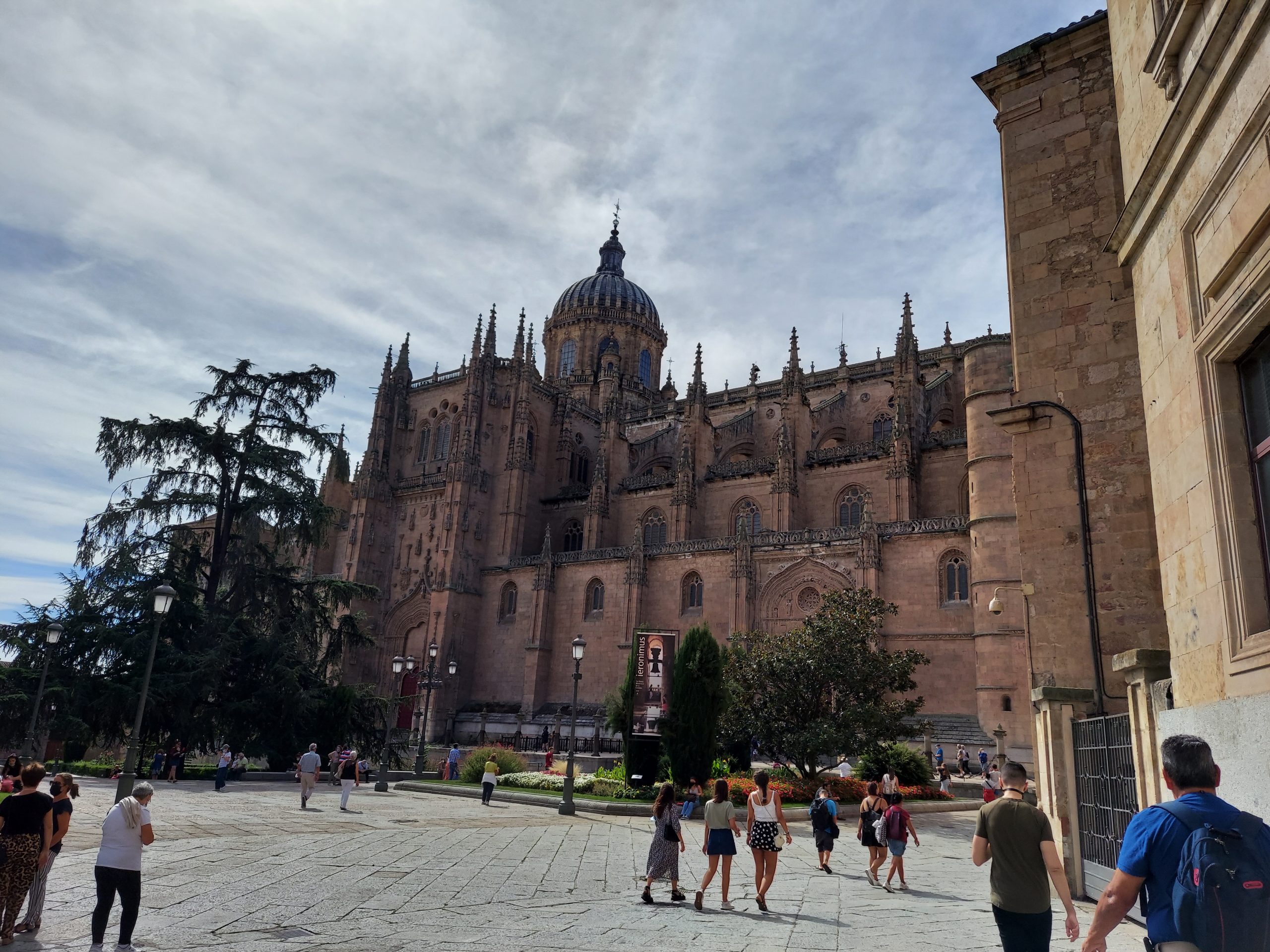
The result of the construction of the New Cathedral is a magnificent building, this time dedicated to the Assumption of the Virgin. This, together with the Cathedral of Segovia, is one of the last two Gothic cathedrals to be built in Spain. Although construction began during the first half of the 16th century, it was not completed until well into the 18th century. That is why, in this structure you can find not only the late Gothic style, but also the Renaissance and Baroque. It is one of the largest cathedrals in Spain in size, and its bell tower, at 92 meters high, is also one of the tallest. During most of the 17th century, construction was halted, and was resumed again in the 18th century, until its completion in 1733.
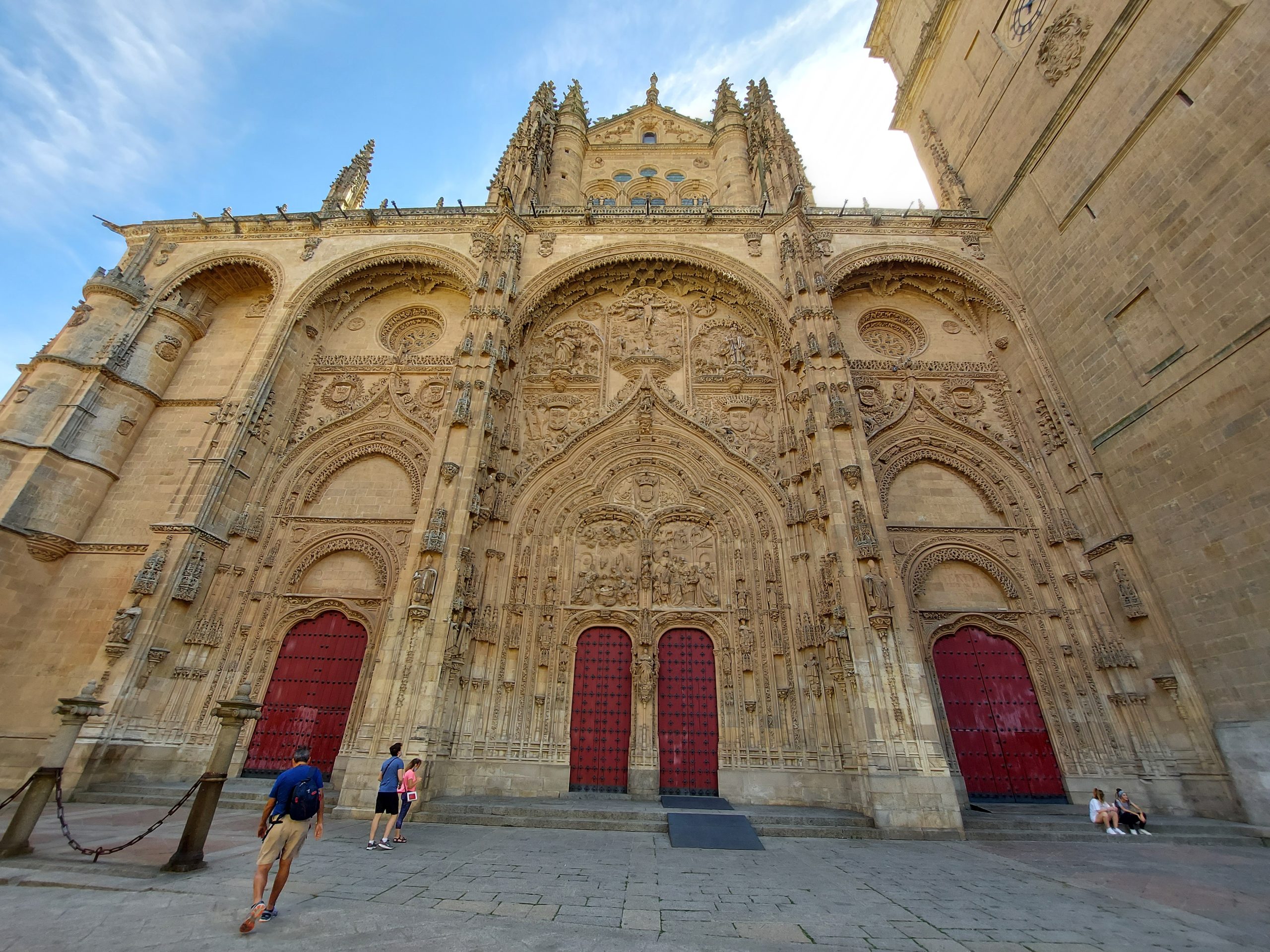
The exterior of the New Cathedral features a main façade rich in detail, reminding us of the shape of an altarpiece. The relief work is impressive, especially those dealing with the Nativity and Epiphany scenes. Above these, there is a large arch that deals with the theme of Calvary, and on each side, statues of Saints Peter and Paul.
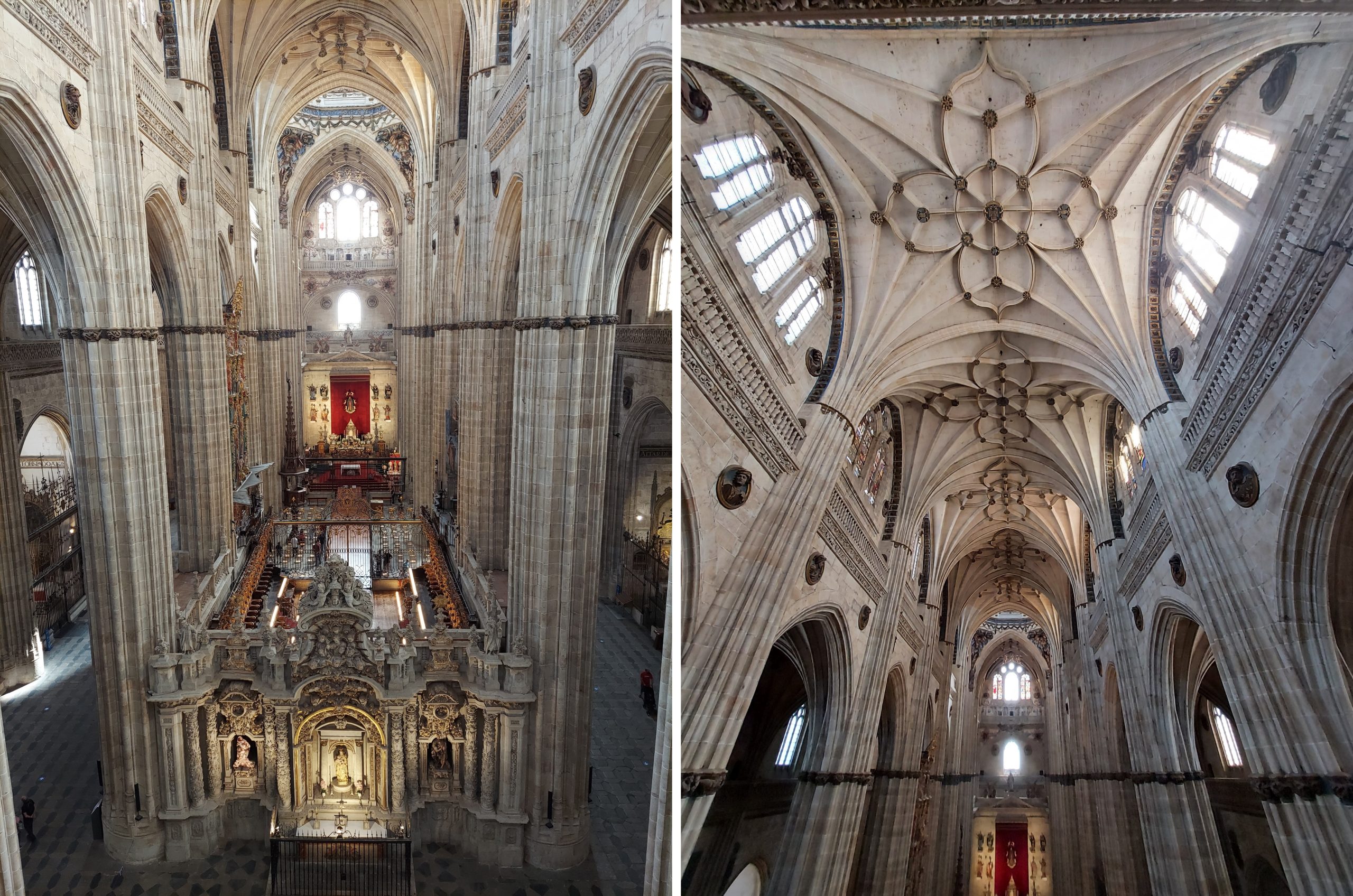
The New Cathedral of Salamanca has a rectangular floor plan and is composed of three naves and chapels, flat chevet, ribbed vaults and almost a hundred stained glass windows, originally from Flanders. In its walls there are also two running galleries, in two heights, numerous medallions with busts of prophets, evangelists, characters of the Holy Scriptures and doctors, among other elements that add richness to the interior.
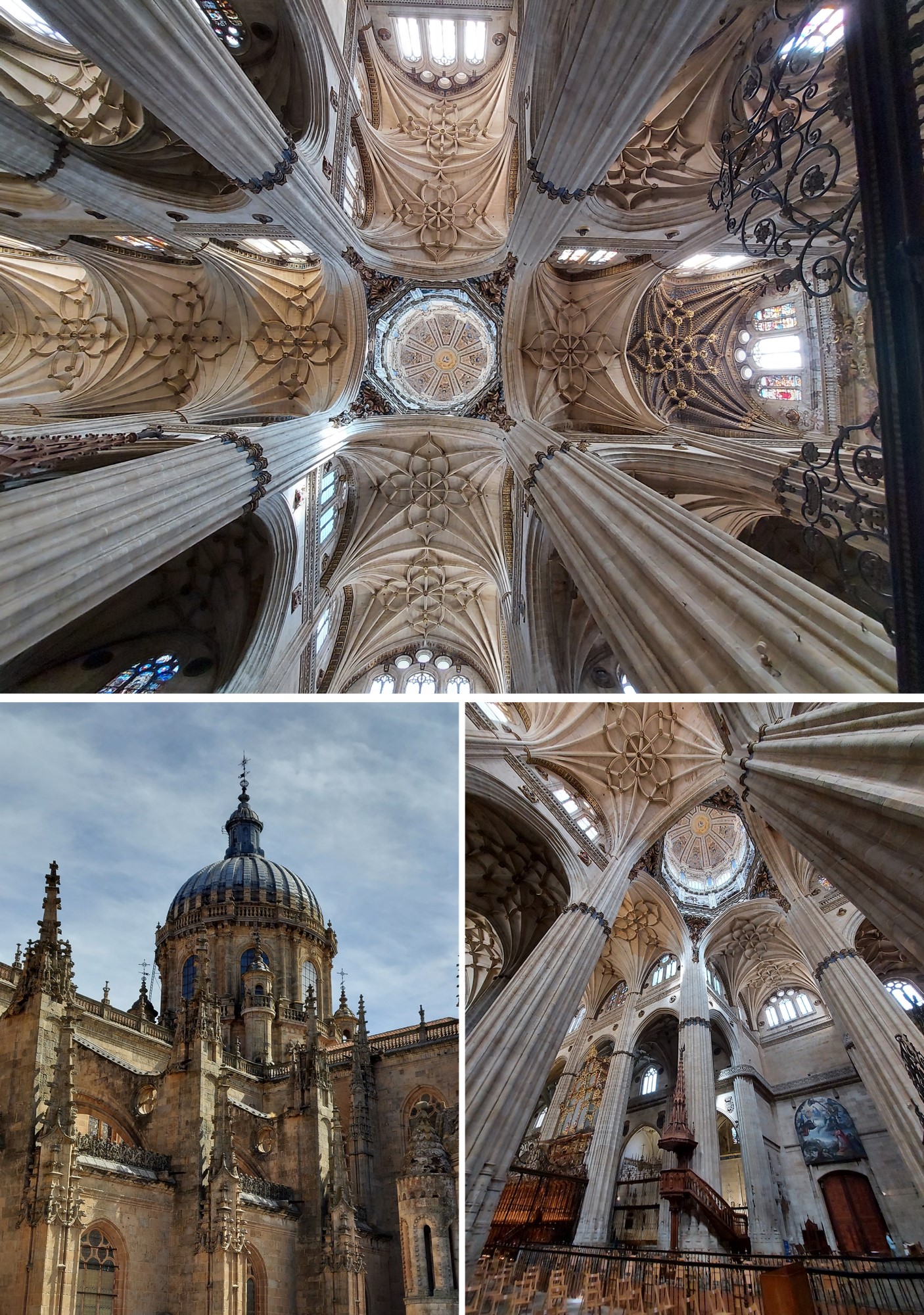
The original dome was erected by Joaquín Churriguera when the works were resumed, after being stopped for almost the entire 17th century, due to lack of budget. It was finished in 1725 and seems to have been similar to that of the cathedral of Burgos, with ribs and baroque decoration.
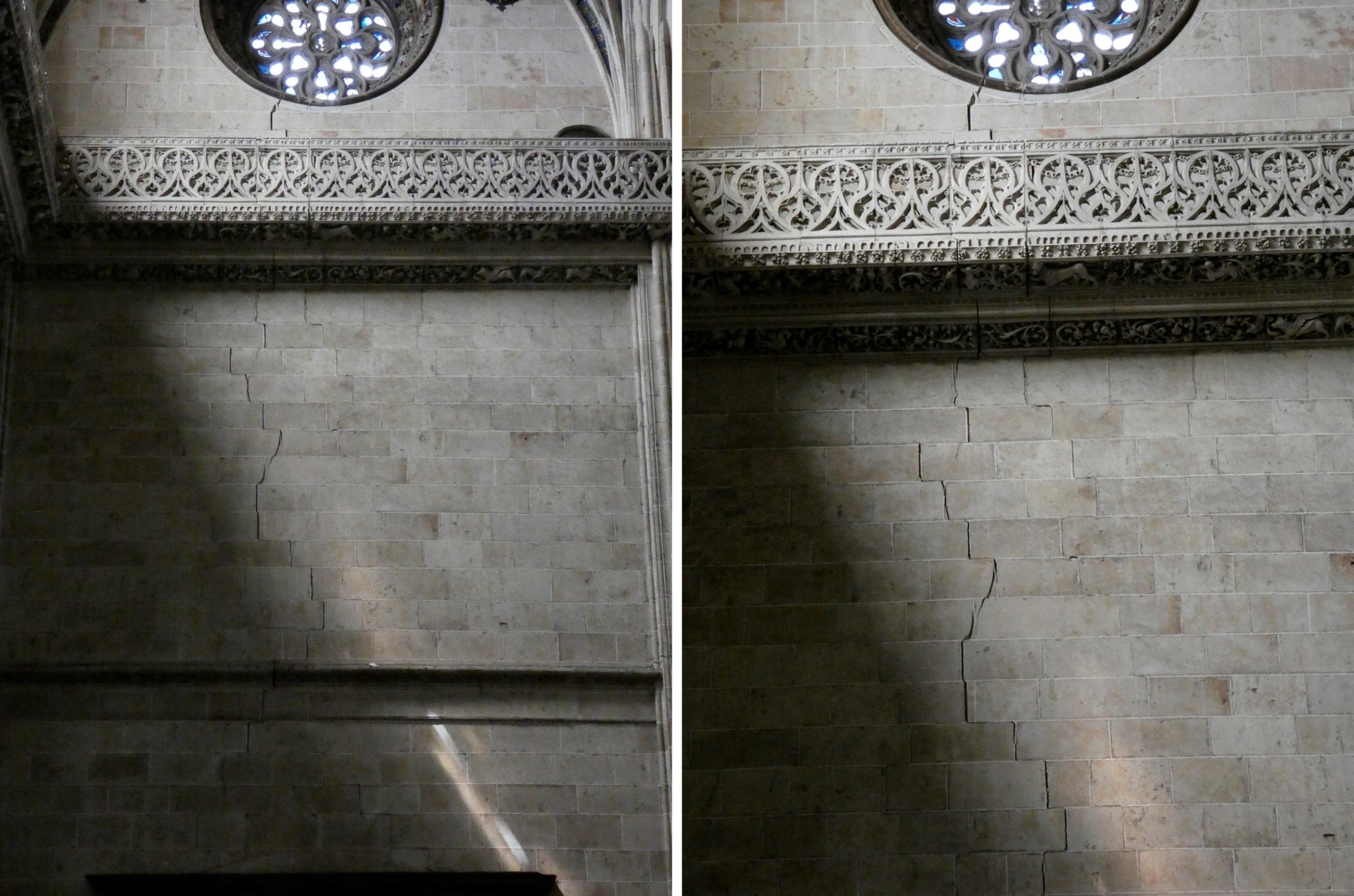
The Lisbon earthquake of 1755, in addition to causing severe damage to the tower, the dome and body of the New Cathedral and the cloister, cracked the central dome. This was replaced by another neoclassical one made by the architect Juan de Sagarvinaga, which is the one we can contemplate today.
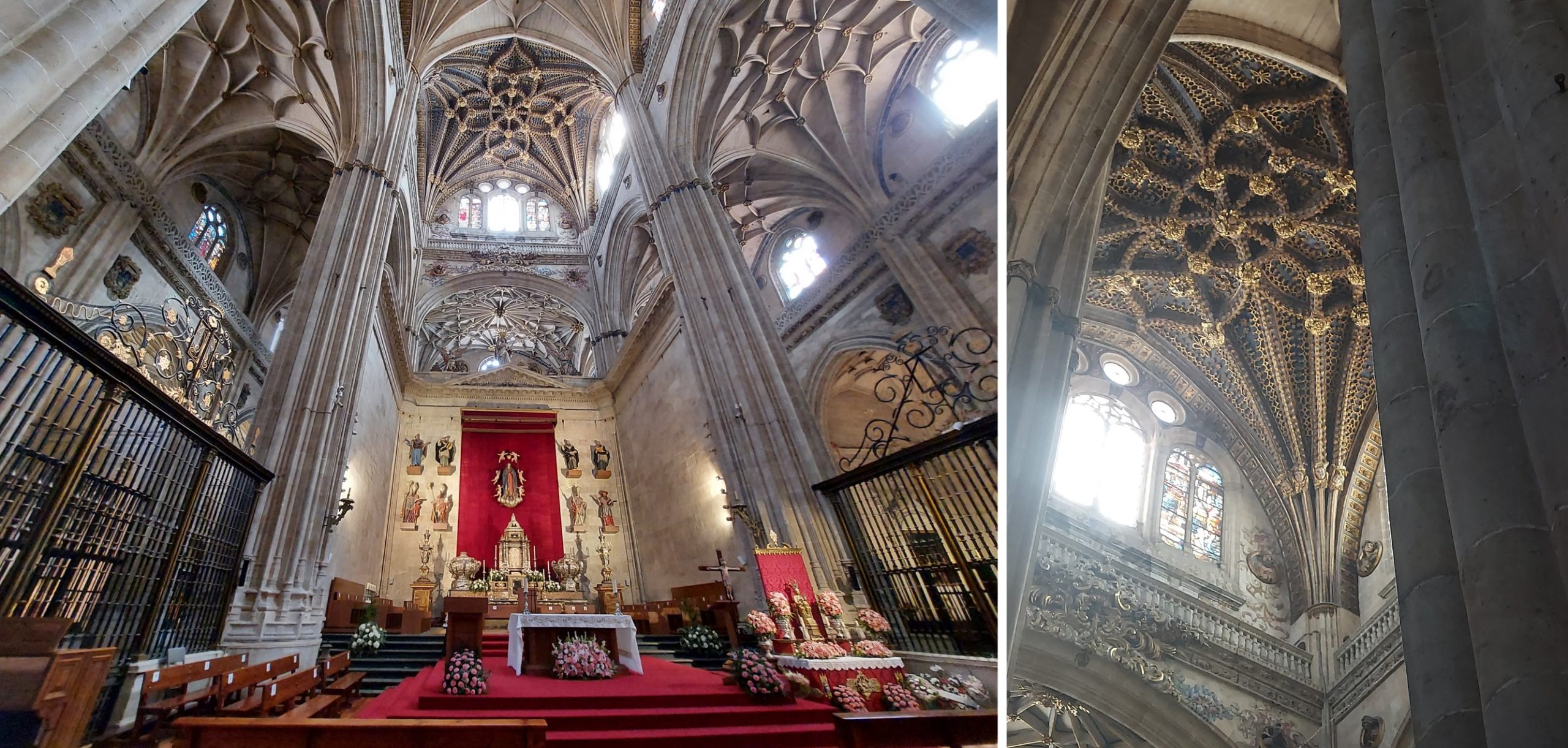
The Main Chapel has a rectangular floor plan, covered by a star-shaped vault very similar to those found in the central nave, but with the peculiarity that it is angled (in the form of peaks or teeth, not smooth) and polychrome.
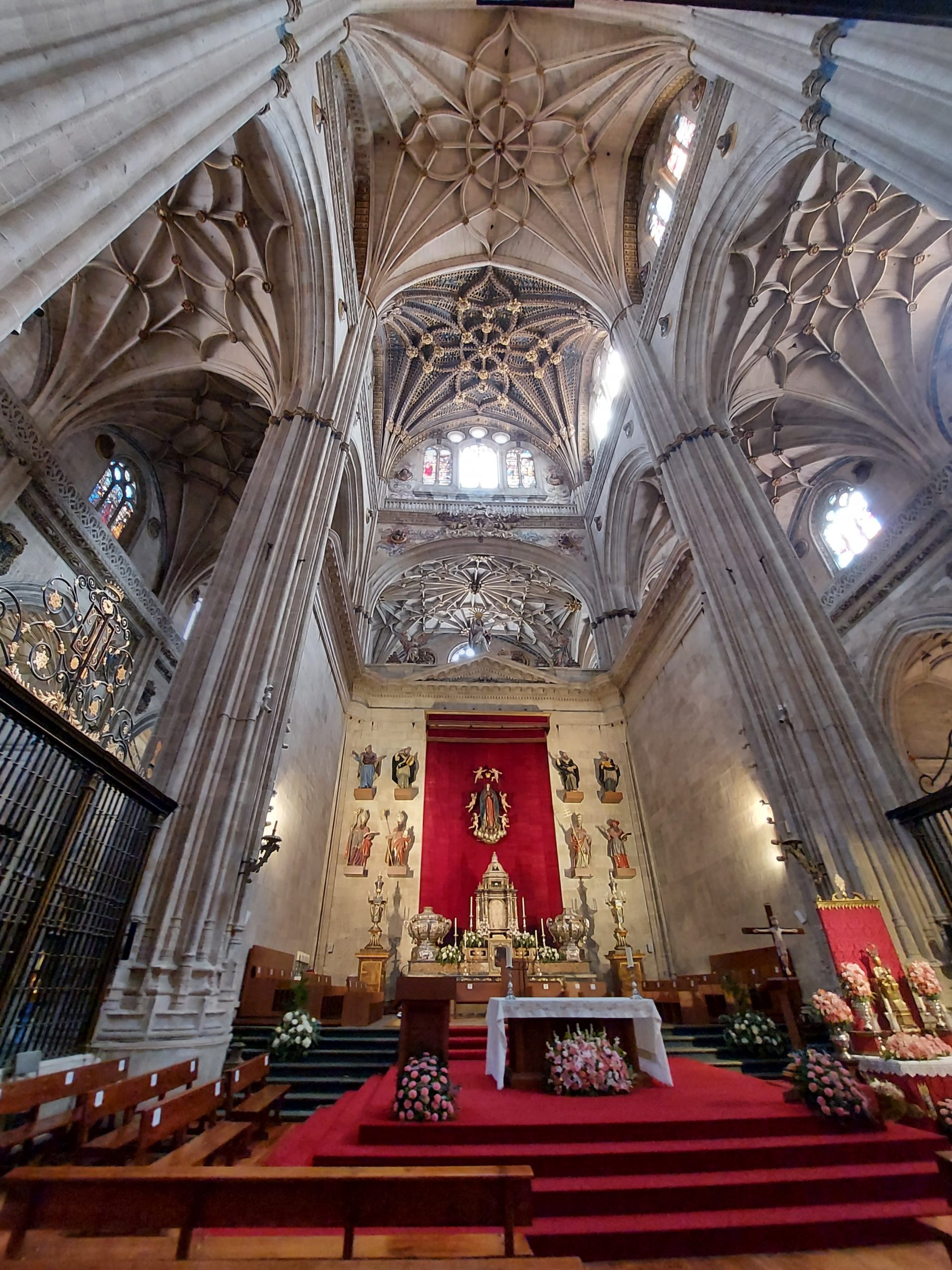
The Chapel lacks a proper altarpiece, as the original one was dismantled in 1743. In its place what we can observe today is a polychrome image of the Virgin of the Assumption by Esteban de Rueda from 1624. The image is located on the fall of a crimson red velvet type fabric, accompanied by angels.
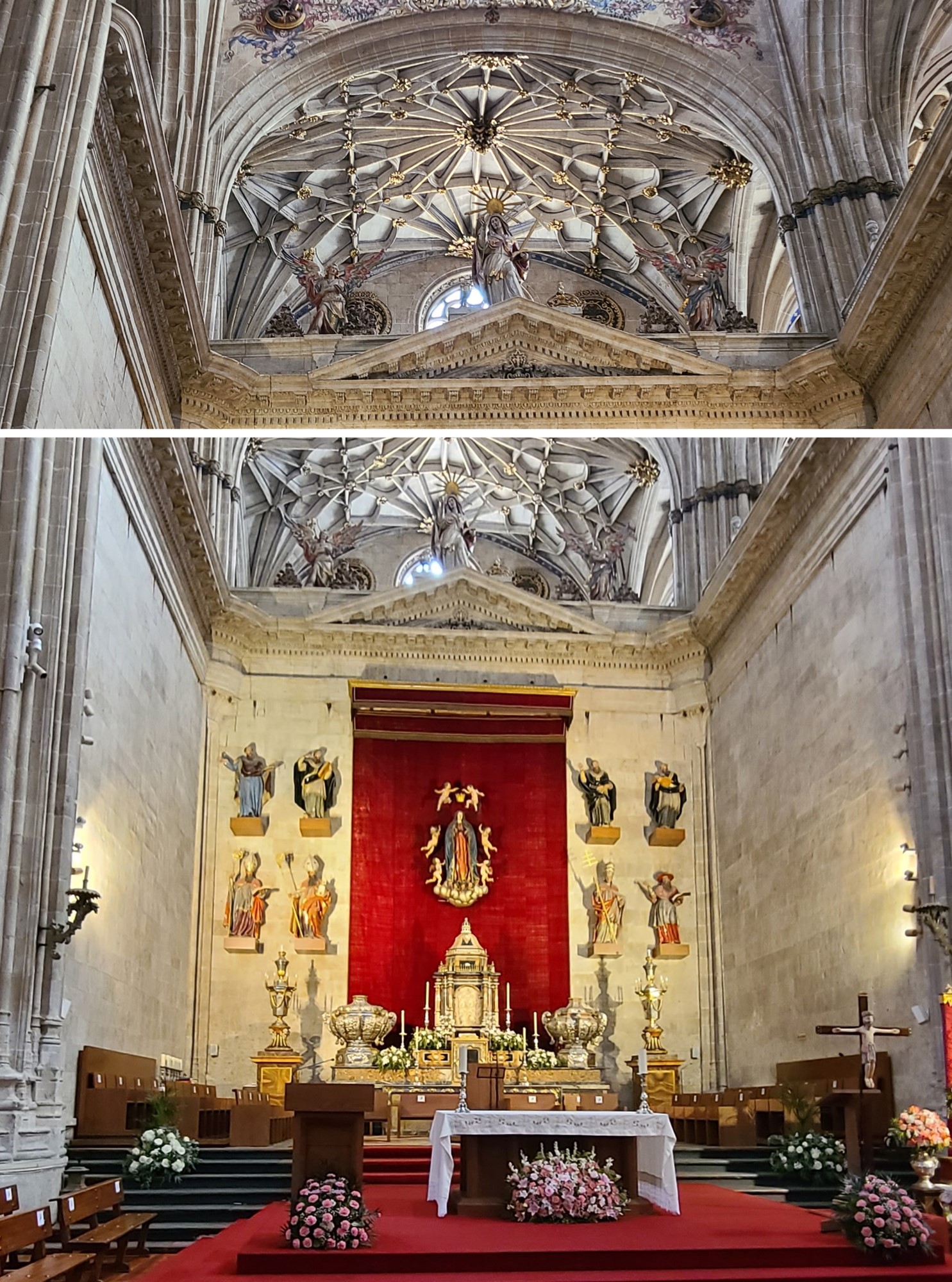
It is also observed in the walls of the presbytery several images of the Religion, angels and Fathers of the Church coming from the disappeared altarpiece. In the marble and jasper tabernacle of 1750, the silver urns with the remains of San Juan de Sahagún and Santo Tomás de Villanueva stand out.
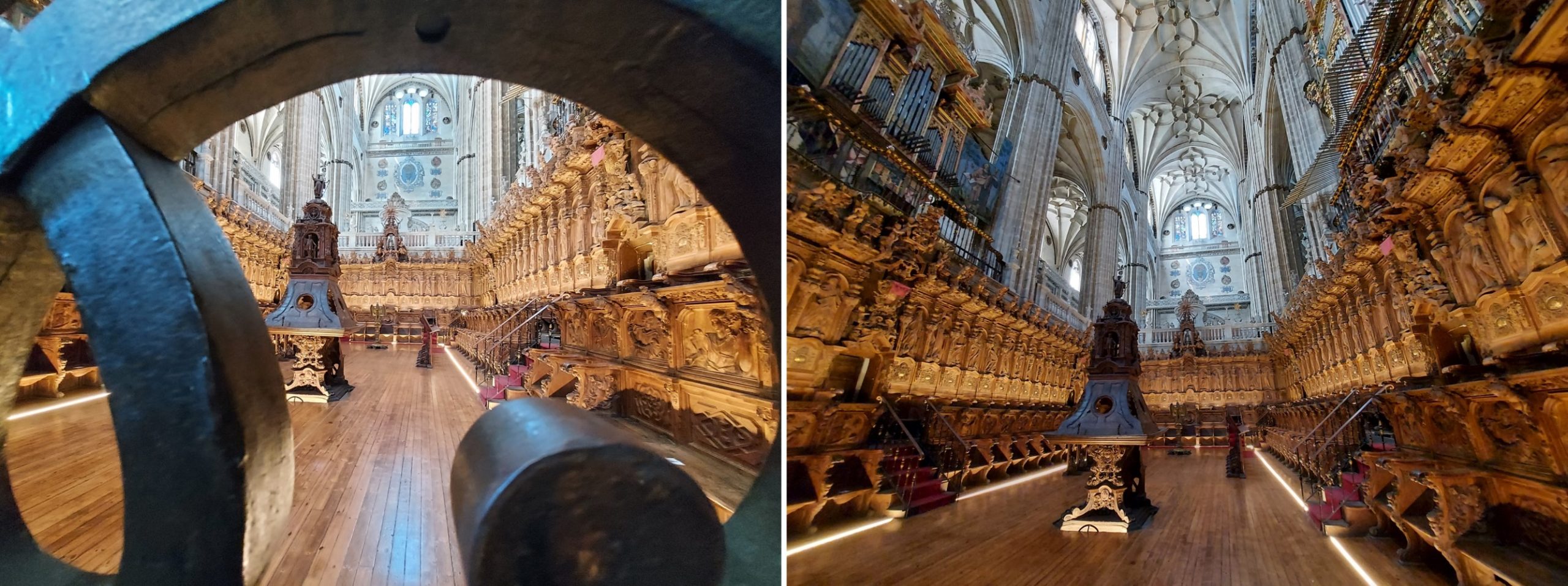
The choir was built between 1730 and 1740 by Joaquín Churriguera. The choir stalls, in two sections, high and low, are the work of various artists. Music was the element that served as cohesion for all the liturgical functions of the New Cathedral of Salamanca.
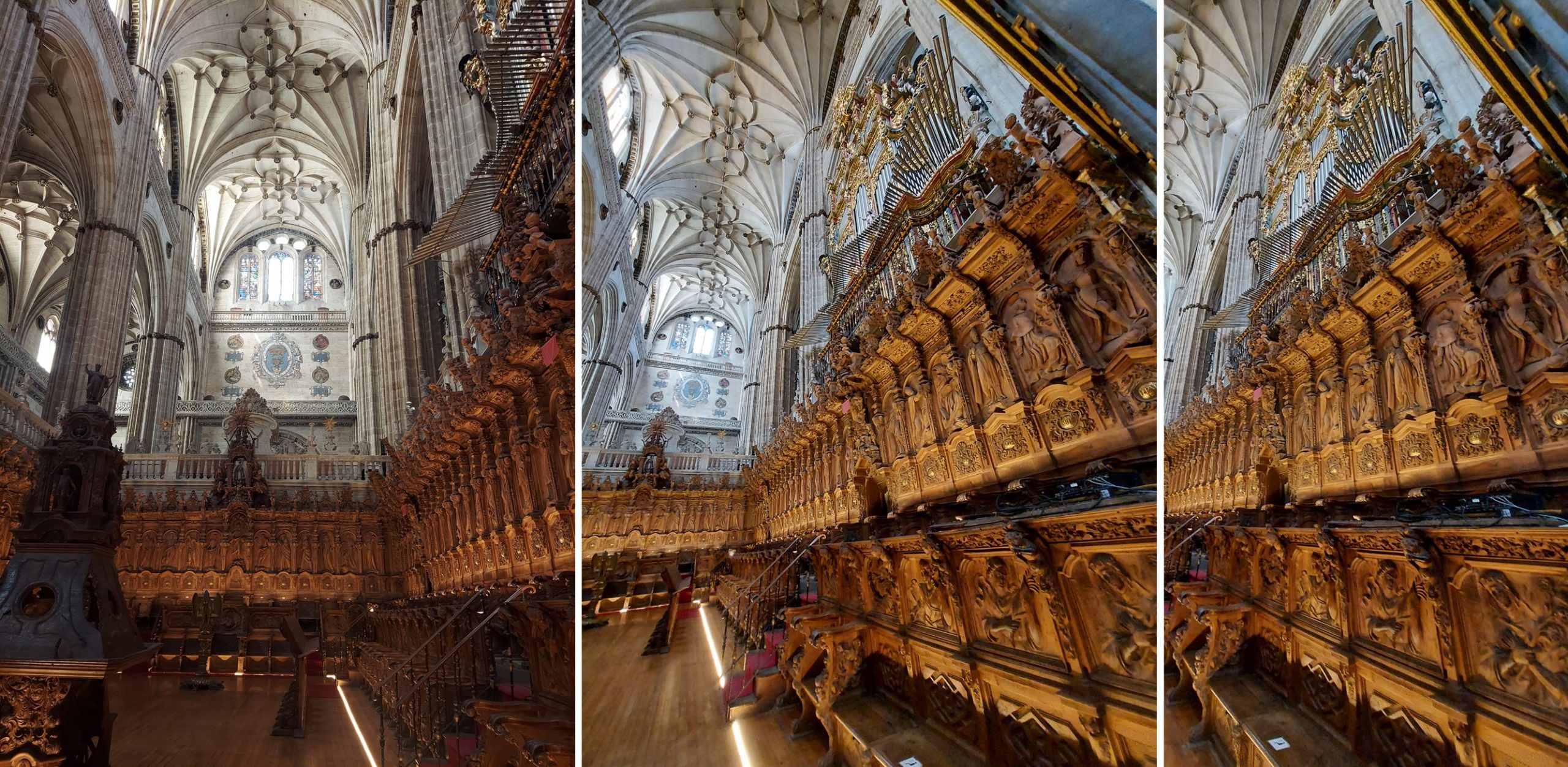
The backs of the choir seats in the choir loft are the highest, with full-length images of Christ the Savior, the Apostolic College, Evangelists, Saints of the local Church of Salamanca, Fathers of the Church, Saints of the Hispanic Church and Titulars of the main seats of the Spanish Crown. In the low choir appear the busts of saints and virgins. The grille that closes the choir and the one that closes the Main Chapel are the work of Duperier.
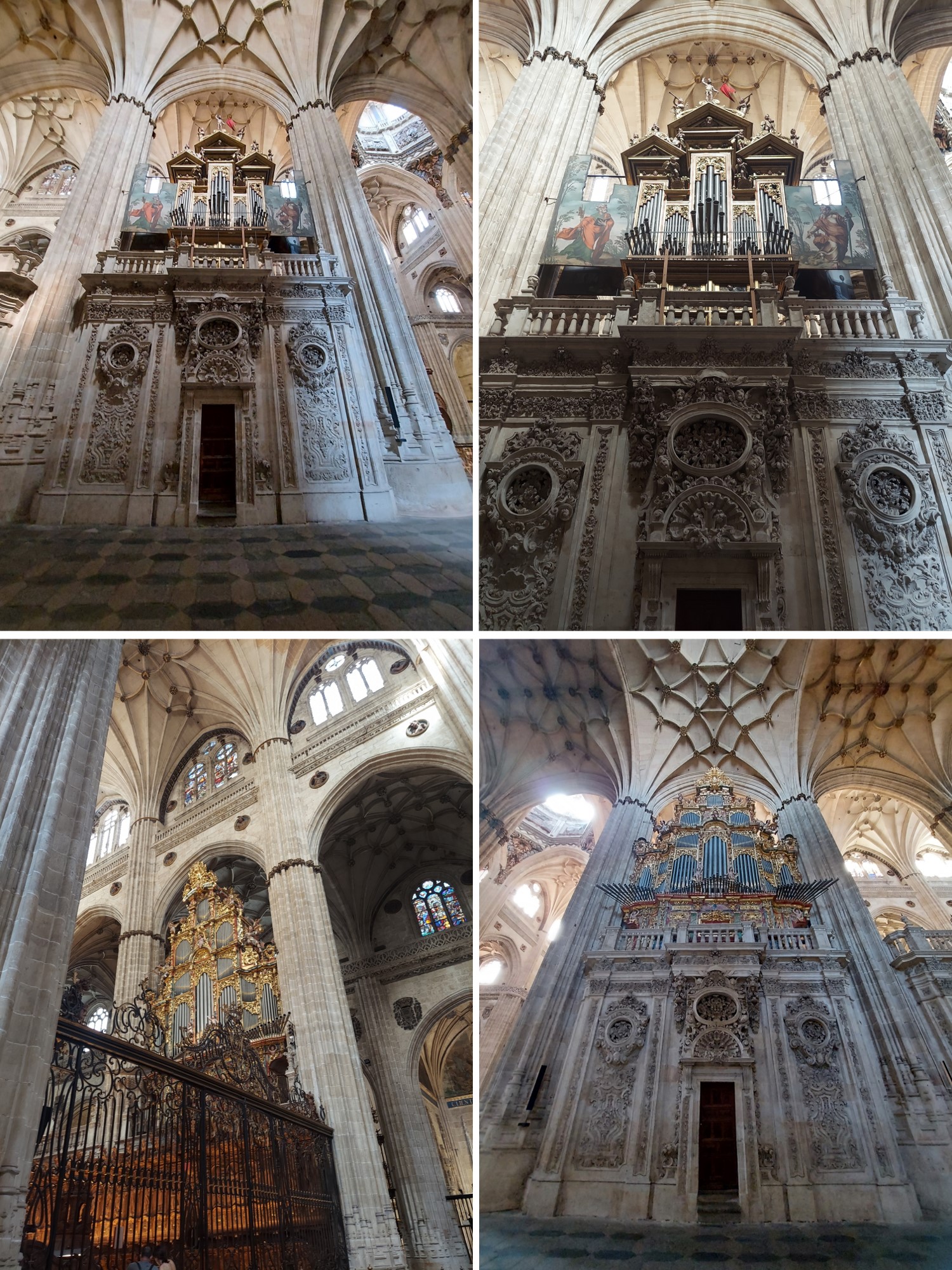
The New Cathedral of Salamanca has two organs: the Epistle Organ, in Renaissance style, built in the 16th century, and the Gospel Organ, in Baroque style. This was built in 1744 and modified in the 19th century, changing its original construction.
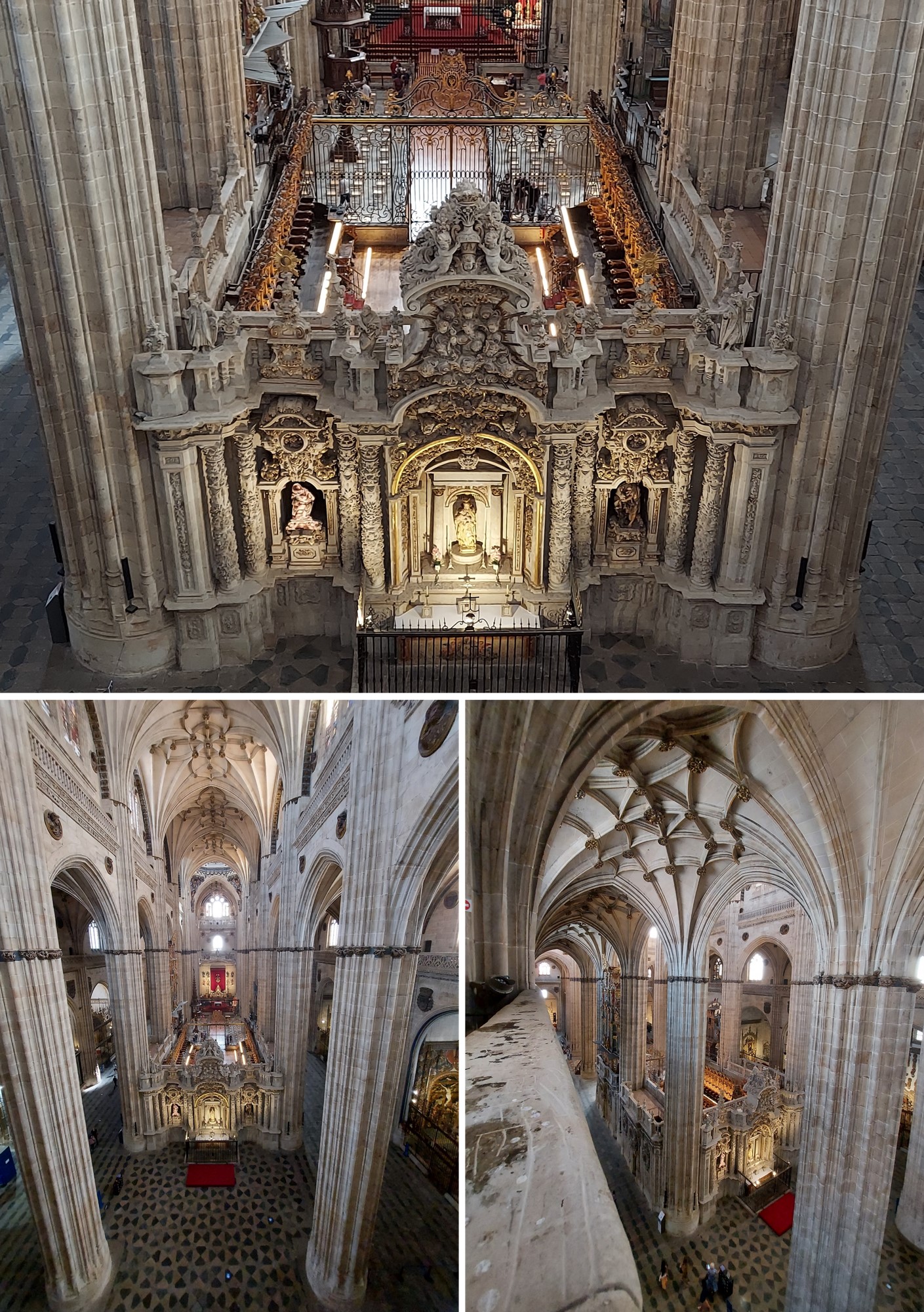
The trascoro is an altarpiece-like structure with integrated columns, decorated with magnificent carving. It contains the image of Santa María de los Perdones in the center, made in the middle of the 16th century, and those of Santa Ana and San Juan Bautista, works by Juan de Juni, on the sides.
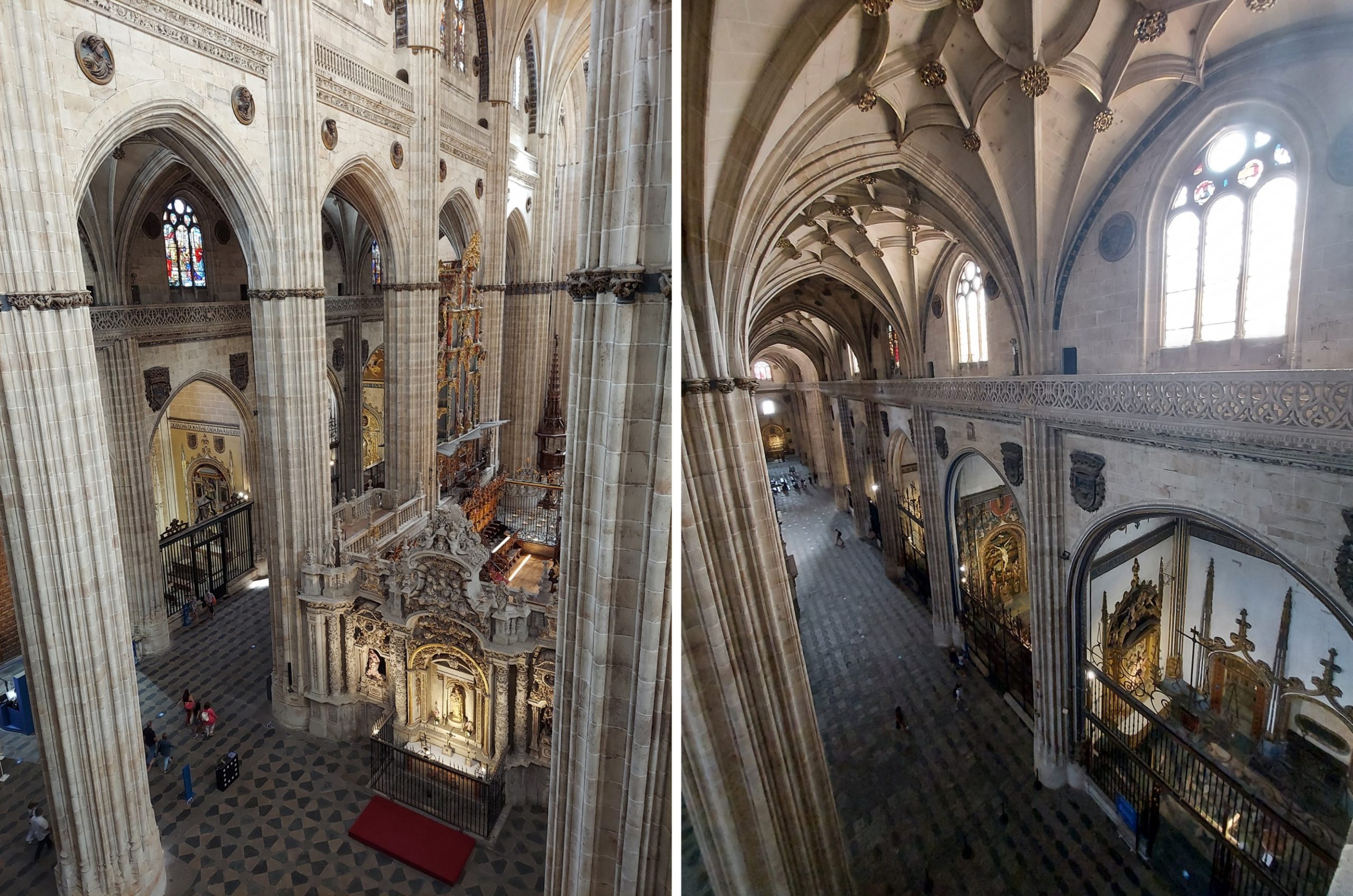
The New Cathedral of Salamanca has twenty chapels, each one covered with different star vaults. The grilles that close them are of different styles and qualities, depending on the time of their construction. Also noteworthy are the tile fronts that decorate some of the altars.
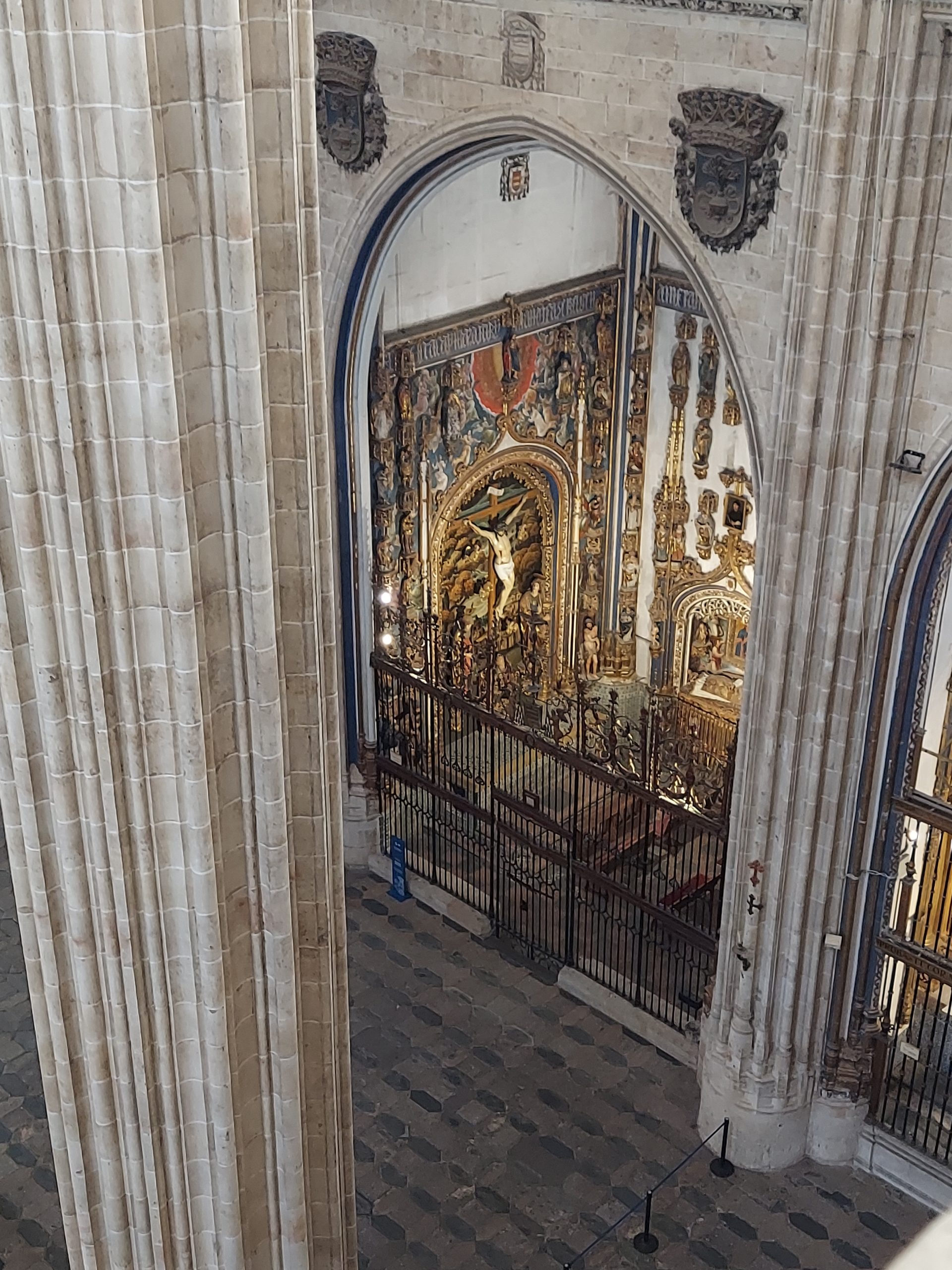
Among the chapels, the Golden Chapel or Chapel of All Saints, built in 1515, stands out. It has several arches where different sepulchres are located, among them those of the founder of the chapel, Francisco Sánchez de Palenzuela. All the walls are decorated with about 110 statues where their golden color stands out, hence the name of the chapel. There are sculptures of characters from the Old and New Testament and a magnificent Calvary presides over the altarpiece of the Chapel.
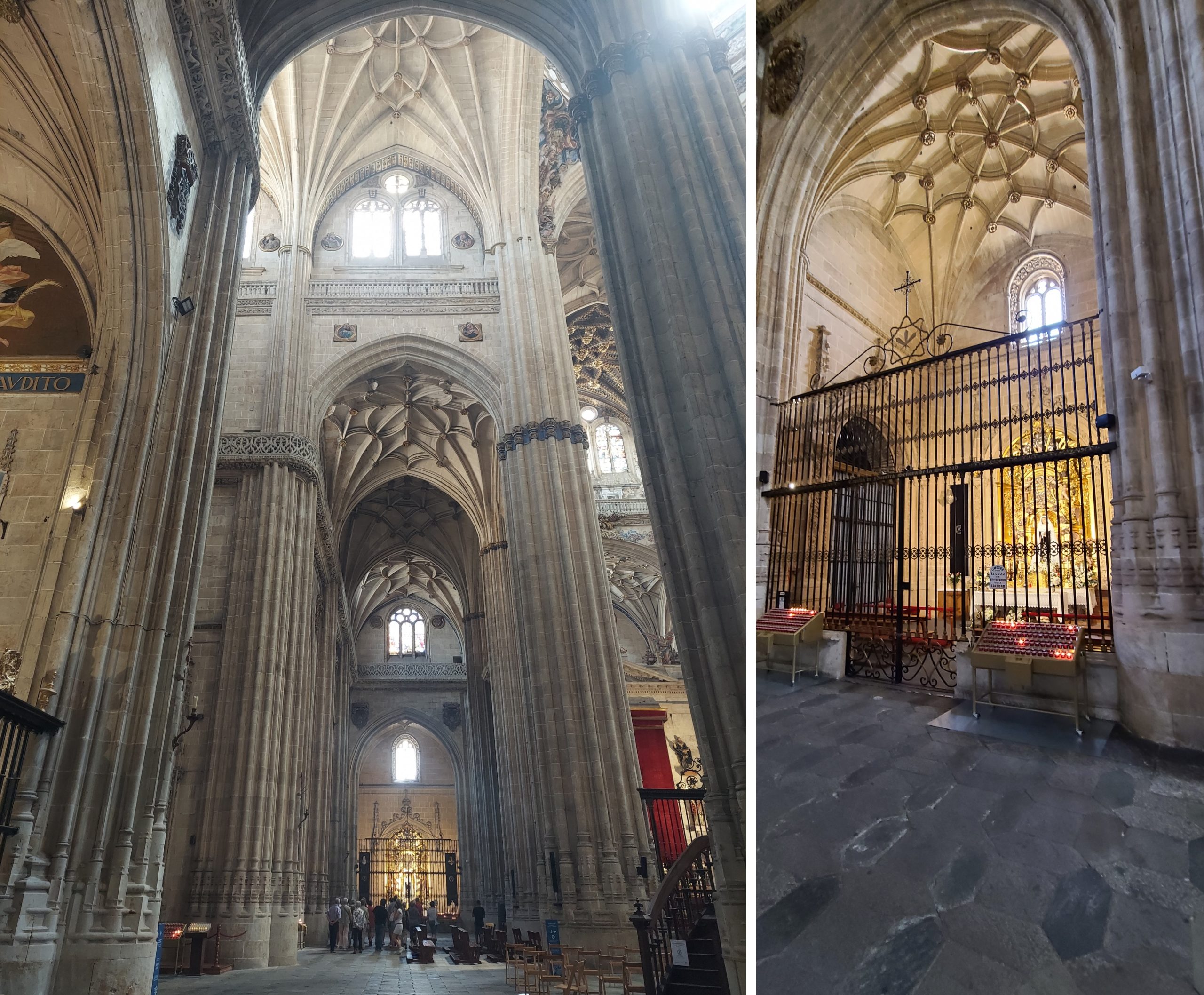
Another of the chapels that we can mention is the Chapel of the Christ of the Battles. This chapel houses the Romanesque image of the Christ of the Battles, black in color and with four nails, which must date from the first half of the 12th century. According to tradition, the image was carried by Bishop Jerónimo, the first bishop of Salamanca after the repopulation of the city, when he accompanied El Cid in his battles against the Muslims.
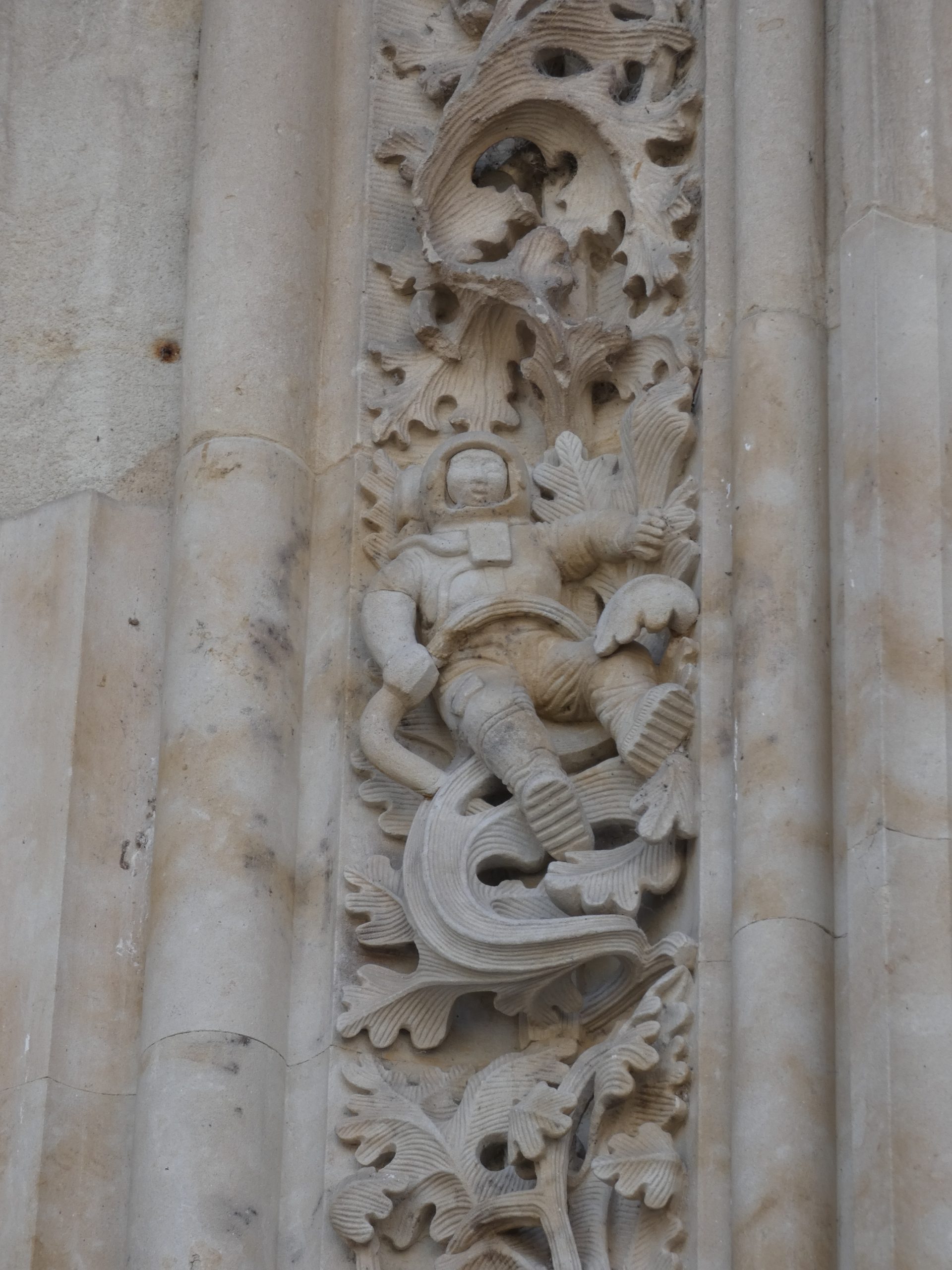
Among the most remarkable curiosities not to be missed when visiting the New Cathedral of Salamanca, is the sculpted figure of an astronaut on the Portada de Ramos, (north door), in front of the Palacio de Anaya. The first thing one would ask, is what is an astronaut doing in a structure built in the 16th century? Here is the explanation. In 1993, Salamanca hosted the exhibition Las Edades del Hombre and decided to restore the door, which was very deteriorated by the passage of time. During the restoration, the stonemason Miguel Romero, carved in stone in 1992, the astronaut that we can see today, following the tradition of incorporating a contemporary element in each restoration. As you can see, it is nothing supernatural, everything has an explanation.
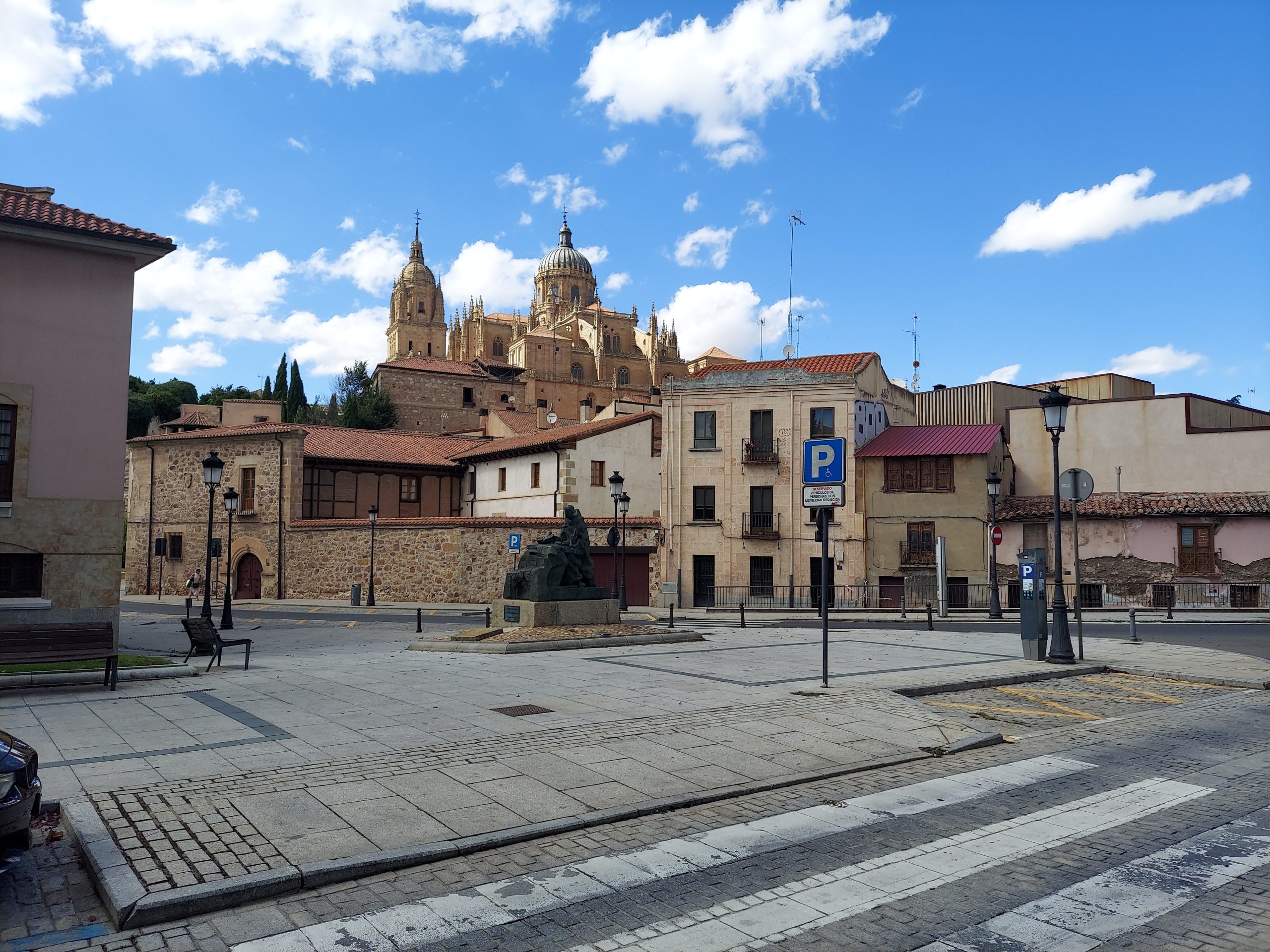
In 1887 the temple was declared a National Monument and in 1999 a Protected Environment.
———–*———–
Resources:
https://es.wikipedia.org/wiki/Catedral_Nueva_de_Salamanca
https://catedralsalamanca.org/catedral-nueva/
https://www.asturnatura.com/turismo/catedral-nueva-de-salamanca/3032.html
